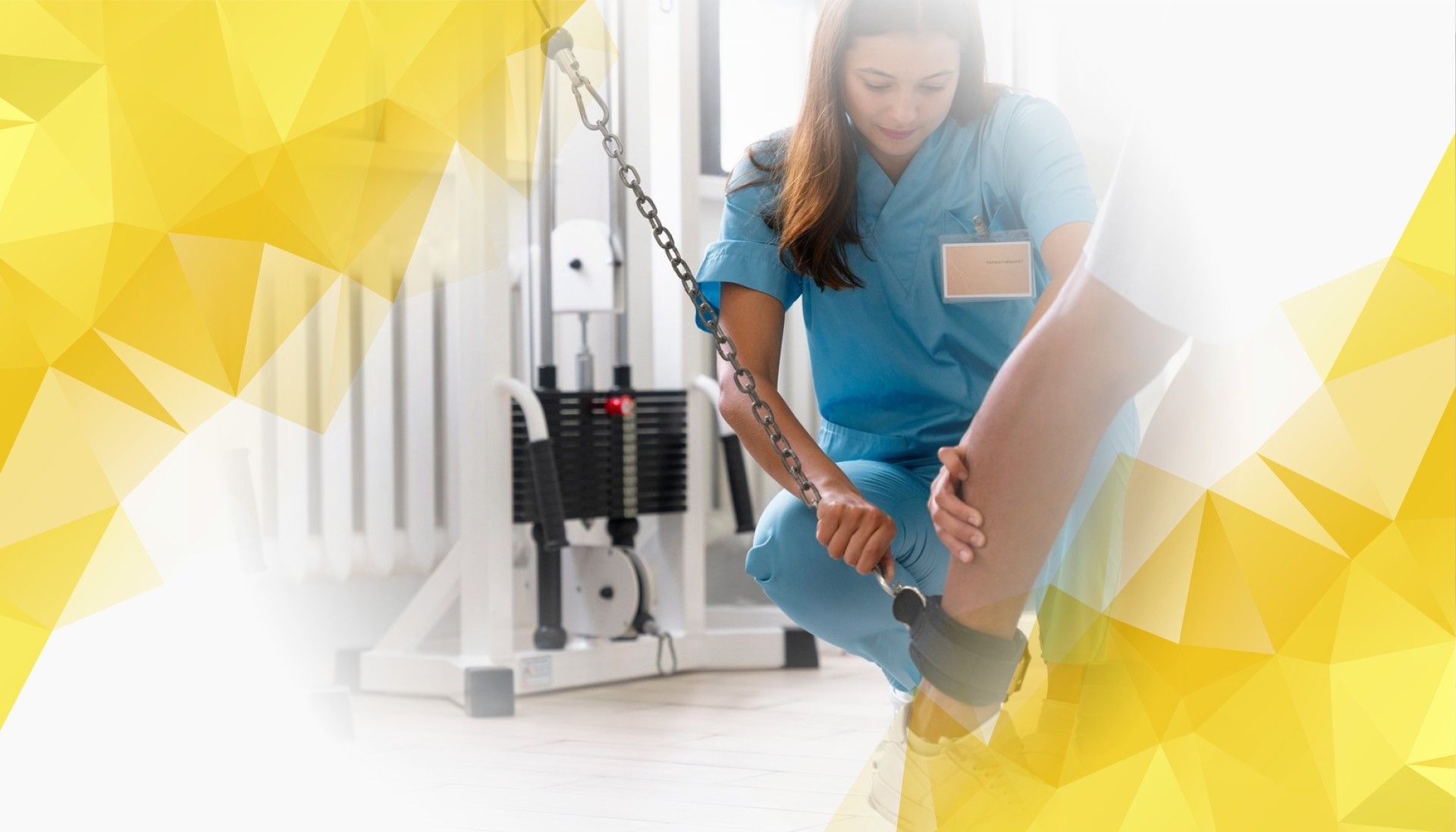Introduction: Why Functional Mobility Matters
Functional mobility—the ability to move independently—is a cornerstone of daily life. The sit-to-stand test , which evaluates how a person rises from a seated to a standing position, is much more than a routine movement . It reveals vital information about strength, balance, and whole- body coordination , making it invaluable in healthcare and rehabilitation. By assessing how well a person can complete this task, clinicians gain insights into someone’s capabilities, identify potential challenges, and create targeted care plans.
However, the way we typically measure and analyse the sit-to-stand test hasn’t always kept up with our understanding of human movement . Conventional approaches, while helpful, often miss critical nuances. That’s where MAI Motion brings a fresh perspective, using advanced technology to transform the way we evaluate and understand this everyday action. In this article, we’ll explore how MAI Motion is empowering more precise mobility assessment s, benefiting patients, clinicians, and researchers alike.
The Shortcomings of Traditional Assessments
In most clinical settings, the sit-to-stand test is conducted with basic tools: a stopwatch and an observer taking notes. Although this provides a general sense of performance, it often overlooks key elements—like whether someone is overcompensating with one side of their body, or struggling with balance at certain moments.
The sit-to- stand movement is more intricate than it appears, requiring many muscles and joints to work in sync. Because of its complexity, a stopwatch or checklist can’t show the full story. This limitation has driven clinicians and researchers to seek out better, more objective ways to measure and interpret this movement .
As recent research comments, “traditional motion capture techniques can be expensive and less sensitive, making it difficult to access detailed biomechanics information in clinical settings.” Clearly, a more accessible and precise solution is needed.
What to Expect in This Article
We’ll break down how the sit-to-stand test works, explore how MAI Motion ’s technology enhances its precision, and discuss why these improvements make a real difference for patients, therapists, and the wider field of mobility research.
A Closer Look at the Sit-to-Stand Test
At its core, the sit-to-stand test is simple: start seated, then stand up without using your hands. In practice, this everyday movement involves a finely-tuned effort, as the legs, hips, and core muscles work together to lift and stabilise the body.
Balance and stability are essential, too. Standing up requires controlled shifts in posture to prevent tipping or wobbling. When someone struggles with this movement, it can signal issues ranging from muscle weakness or joint pain to more serious neurological or balance disorders. That’s why the sit-to-stand test is a trusted tool, not just for checking ability today, but also for predicting future fall risk and loss of independence.
How the Sit-to-Stand Test Is Usually Performed
Typically, the test involves timing how long it takes to complete a set number of repetitions—sometimes just once, sometimes five times in a row to assess endurance. Traditional tools include a stopwatch and perhaps a checklist of observable difficulties. Advanced clinics might use pressure sensors or motion-capture cameras for more detailed data, but these setups are often bulky and expensive.
MAI Motion changes that equation. With lightweight, wearable sensors and smart software, it can gather detailed movement information, including joint angles, symmetry between limbs, and subtle shifts in balance—all without the need for a special lab.
A recent study found that the MAI Motion system can effectively capture accurate biomechanical data even when the test is performed just three times, rather than the usual five. This finding suggests that the test can be less demanding for patients, yet still deliver meaningful insights for clinicians.
How MAI Motion Raises the Bar
What makes MAI Motion truly different is its use of wearable inertial sensors—small devices that track movement from multiple angles in real time. Unlike traditional stopwatches or checklists, these sensors measure every phase of the sit-to- stand movement , capturing details such as speed, acceleration, joint angles, and posture adjustments.
Paired with advanced AI algorithms, the system analyses movement data to uncover hidden patterns, spot weaknesses, and flag any compensatory behaviours during the transition from sitting to standing. No more relying solely on subjective observation—the technology provides clear, objective metrics for clinicians.
The result? A more reliable and sensitive assessment, which helps spot problems that traditional methods might miss. With this data, therapists can pinpoint exactly which part of the movement needs support, whether it’s boosting strength, correcting asymmetry, or improving balance.
Importantly, research has shown that automated analysis can create reports that are both comprehensive and quick to interpret, saving clinicians valuable time.
Another key advantage: recent validation studies have found that performing the test just three times, instead of five, provides equally trustworthy results. That means less fatigue for patients, making the test especially accessible for older adults or those in recovery.
MAI Motion’s Standout Innovations
- Wearable Inertial Sensors: These unobtrusive sensors track movement from various angles, allowing clinicians to see if a person is relying more on one side or using compensatory strategies.
- AI-Driven Analysis: The software breaks the sit-to- stand movement into distinct phases—leaning forward, lifting off, stabilising—so therapists can see exactly where difficulty arises.
- Automated Clinical Reporting: The system generates clear, actionable reports that help guide therapy, monitor progress, or adjust a care plan over time.
Validation work has confirmed that doing three repetitions yields data just as reliable as five, without adding extra strain on the participant.
Real-World Benefits for Patients and Clinicians
The enhanced accuracy and detail provided by MAI Motion lead to many practical benefits. For therapists, objective data enables the creation of highly personalised rehabilitation plans, targeting specific movement challenges. This focused approach can speed up progress and lead to better outcomes.
Ongoing measurement also helps track improvements over time, making it easier to adjust interventions as needed—removing much of the guesswork from rehabilitation decisions. Plus, because MAI Motion’s technology is portable and non-invasive, it supports remote monitoring. Patients can be assessed and coached from home, which is increasingly important in today’s telehealth landscape.
Recent studies also suggest that standard cameras can be used together with wearable sensors, further improving the accessibility and scalability of remote assessments.
Overall, the evidence shows that MAI Motion ’s innovations do more than collect numbers—they translate into tangible improvements in care, making the assessment process more useful for everyone involved.
Looking Ahead: The Future of Mobility Assessment
MAI Motion ’s technology isn’t just changing rehabilitation; its potential impacts a wide range of fields. In sports, athletes could use it to analyse and fine-tune movement efficiency. In elder care, it could help spot subtle signs of declining mobility—enabling preventive action before falls occur.
As wearable technology and AI continue to evolve, we’ll gain even deeper insights into human movement, empowering better interventions and enhancing quality of life at every age.
Conclusion: A Step Forward in Mobility Assessment
The sit-to-stand test is a deceptively simple check of functional mobility—but thanks to innovation from MAI Motion, it’s now becoming a rich source of clinical insight. By combining wearable sensors and smart data analysis, MAI Motion enables clinicians to better understand complex movements, personalise care, and support patient independence.
As technology continues to advance, mobility assessment will only grow more accurate, accessible, and patient-centred. With tools like MAI Motion , we’re moving towards a future where every individual can enjoy greater confidence and freedom in their movement.
References
Armstrong, K., Zhang, L., Wen, Y., Willmott, A. P., Lee, P., & Ye, X. (2024). A marker-less human motion analysis system for motion-based biomarker identification and quantification in knee disorders. Frontiers in Digital Health. https://doi.org/10.3389/fdgth.2024.1324511
Wen, Y., Verma, T., Whitehead, J. P., & Lee, P. (2025). Empirical validation of a streamlined three-repetition sit-to-stand protocol using MAI Motion. Applied Sciences, 15(10), 5688. https://doi.org/10.3390/app15105688

